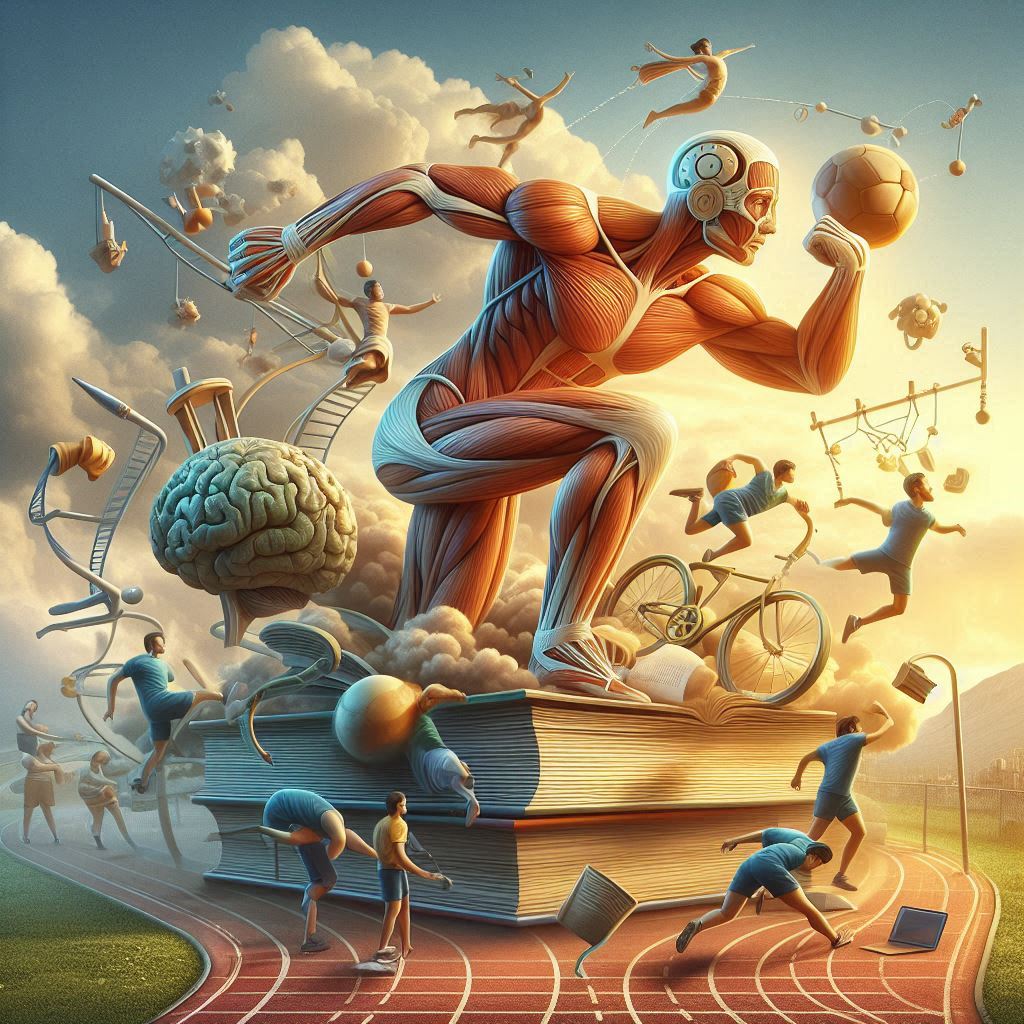Most folks loathe working out at the gym, and yet, they love the results: a healthy body, toned muscles, more energy, and the list goes on. In a similar vein, I hate to read. The process for me is arduous, if not painful. Yet, I love the results.
I am a reluctant reader, but I have found it invaluable to crystalizing thoughts, sparking innovation, and gleaning insights. A complex and important relationship exists between effort and reward that is the fuel to our mind’s creative engine.
Reading is not easy, but there are no shortcuts to knowledge. To quote someone whose name escapes me at the moment, “Knowledge doth make a painful entry.”
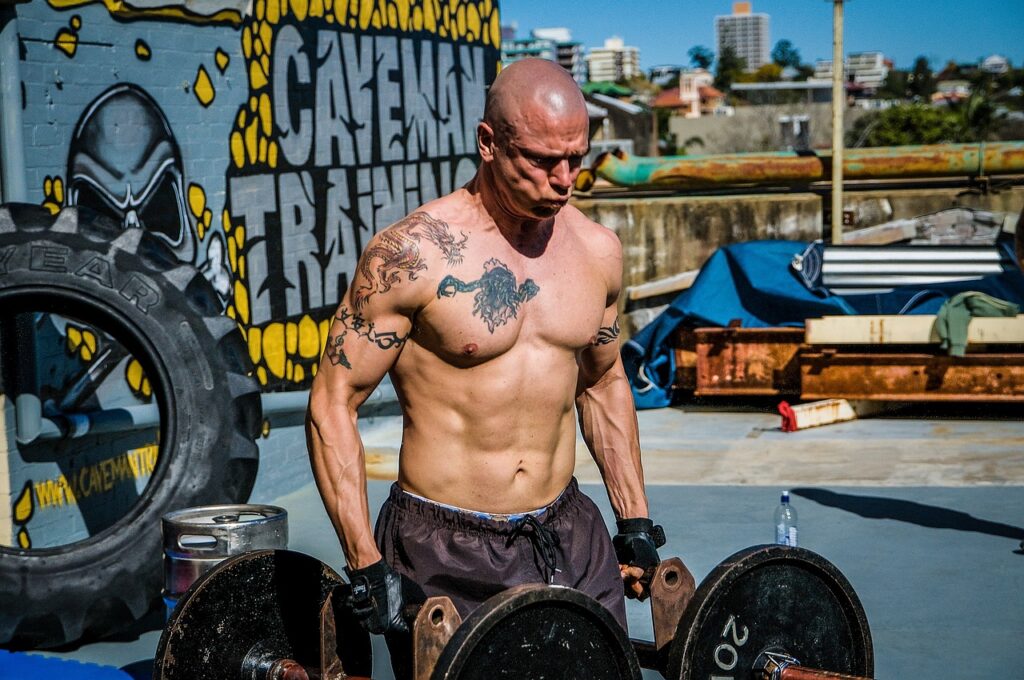
Does anyone truly enjoy working out at the gym?
My journey with reading began in 1991 in a conversation with a college friend, Bill Pardue. As was often the case, Bill and I would sit together in the Tennessee Tech University cafeteria along with other friends for a meal and conversation.
Bill and I could rarely resist a good debate, though argument might better characterize the nature of the engagement. I don’t remember what ignited this particular discussion, but we were debating the merits of reading.
Bill had taken the position that “being a reader” is essential to gaining knowledge. I, on the other hand, took the position that verbal jousting was more impactful. A conversation is two-way while a book is one-way.
I must confess my sin. I am a contrarian at times. If Bill had taken the latter position, I would have likely taken the former, and my path to being a reader would have likely been derailed.
Yet, we marked out of territory and lines of debate.
I wouldn’t say that Bill won the debate, as such an admission is difficult for me, even with the long passage of time. However, Bill did make a strong point that penetrated deep into my thoughts, a painful entry. Bill said, “You know, Dave, the world’s greatest political leaders are readers.”
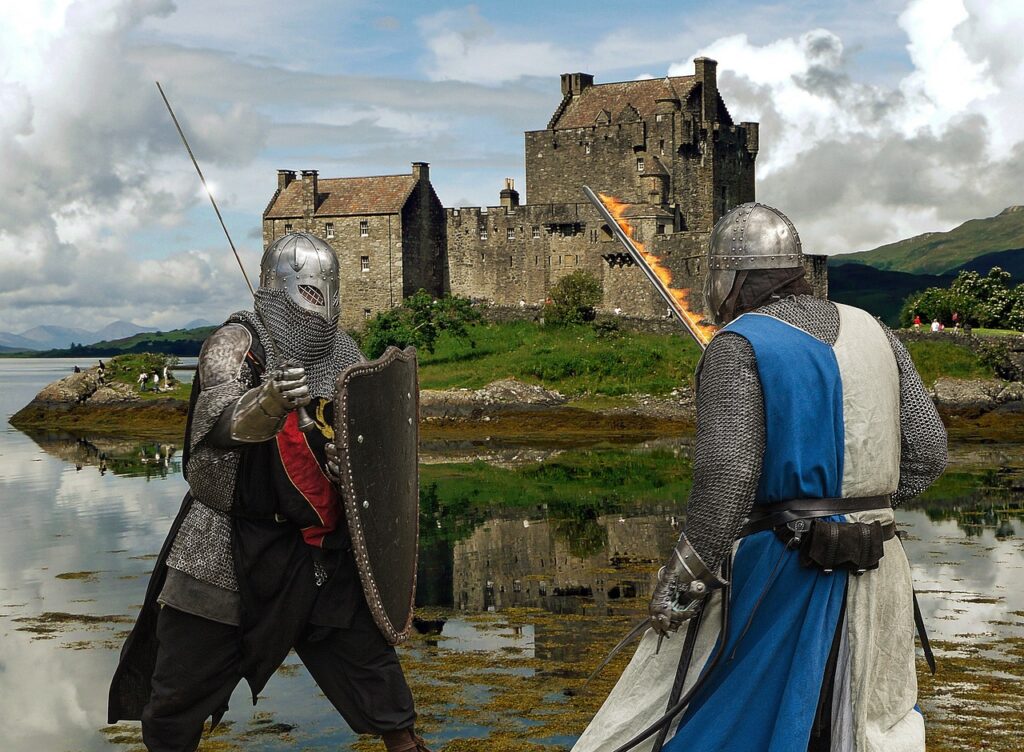
Two knights clash with swords, as two minds clash with ideas.
Bill knew my weakness for politics. He knew that I would drop my guard and be unable to parry such a thrust. He went on to list Thomas Jefferson, Benjamin Franklin, and a long list of impactful political leaders who were indeed readers.
I stayed the course with my argument. I dared not reveal a wound.
However, as the days passed and my wounds “healed,” I began to realize Bill was right, and I decided that at the age of 22 years old, I was going to become a “reader.” I dedicated myself to reading 20-30 minutes per day, usually on the toilet and still my preferred reading spot.
My first hurdle? I didn’t know what to read. I needed a book to start my journey. I asked anyone who would listen what their favorite book was and what they would recommend. Eventually, I settled on The Hunt for Red October by Tom Clancy, and that book became the first book that I purchased for my library.
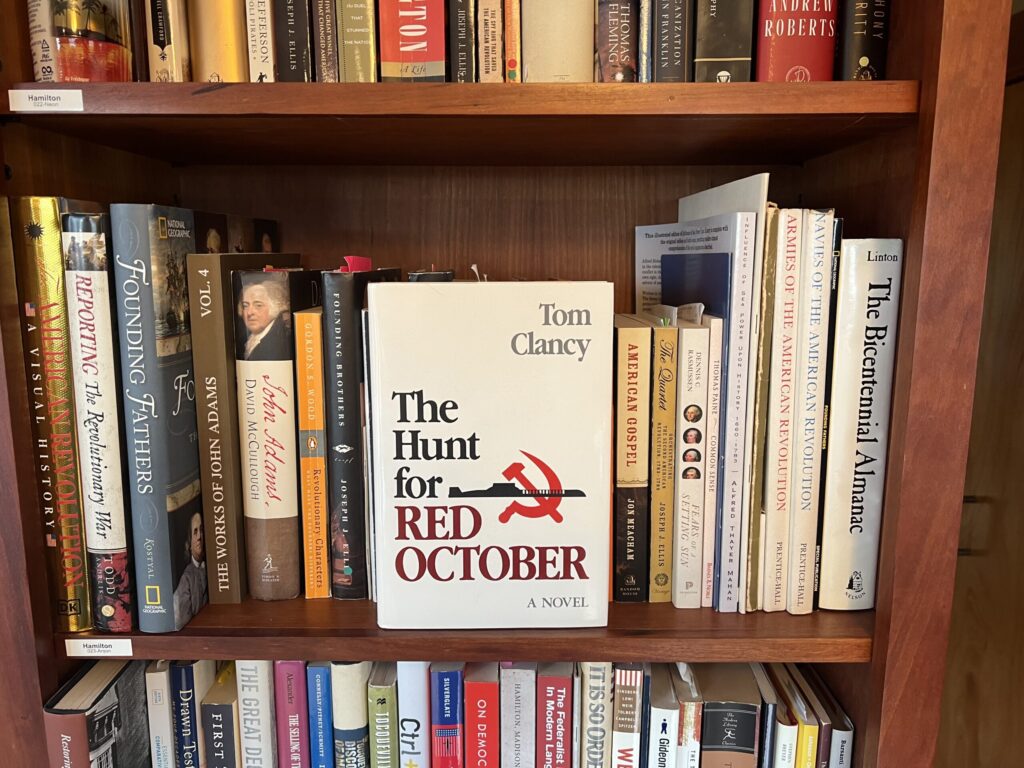
The hardback version of Clancy’s book is sitting on one of my library shelves. My original copy was a softcover book, but I lost that book in multiple house moves over time. This one is a purchase from one of my many trips to McKay’s.
I was hooked. I could not put down Clancy’s engaging novel. Over the next few months, I devoured Clancy’s other books, including the very dense book Red Storm Rising. I soon sasiated my reading pallete and expanded my library to other popular authors such as John Grisham and Michael Crichton.
I was now a reader.
Yet, I was a slow reader. It would take me several months to read a single novel. I loved it, though.
In 1995, I moved to Dahlgren, Virginia, and a whole new world of bookstores opened up to me. It was a short drive to Washington, DC, which had a diverse array of bookstores from big boxes to small shops.
During one of my many exersions to DC on the hunt for books, I ran across a “Sale” bin filled with odd collections of fiction and nonfiction books. I had not read nonfiction before, but I thumbed through the book pile, half-hazardly stacked in the wood-framed bin. Clancy, Grisham, Crichton…slide through my hands.
Then, a book caught my eye, Running Critical by Patrick Tyler. The submarine on the front cover and the picture of Admiral Rickover pulled me in. I began to pick through the pages and read a passage here and there.
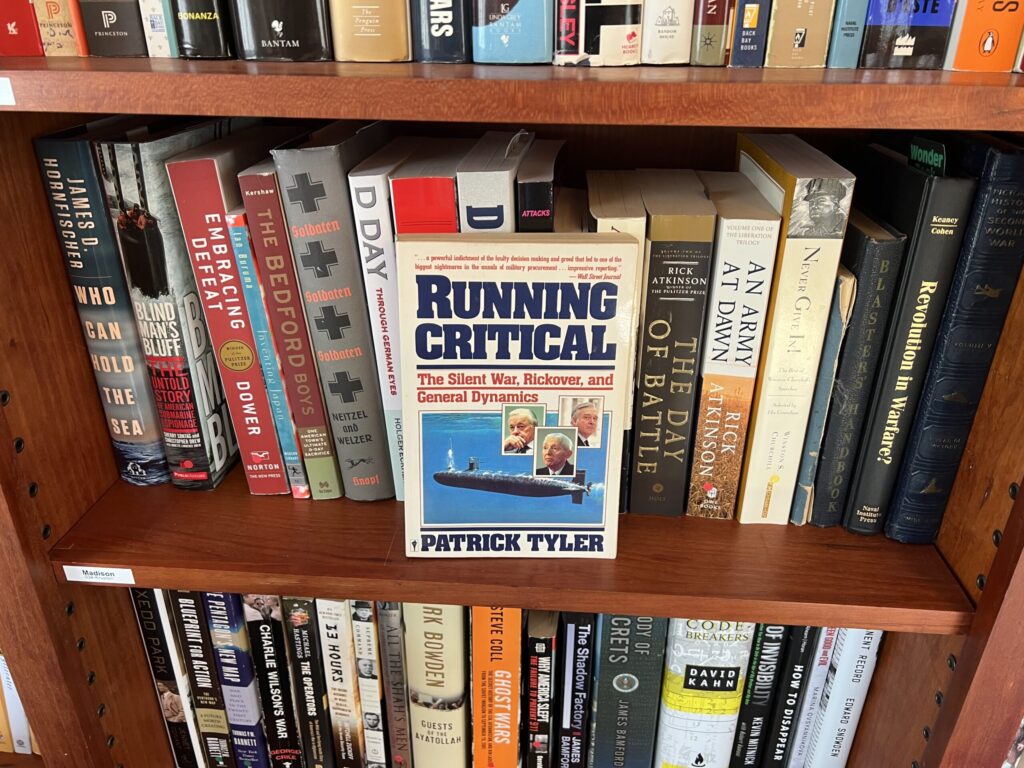
The first nonfiction book in my library was purchased nearly 30 years ago.
This book became the first nonfiction book in my library. Again, I was hooked. I could not put it down. That book led to a tectonic shift in my reading regiment, away from fiction to nonfiction, but the bathroom remained my reading location. I rarely read fiction anymore, with over eighty percent of my books being nonfiction.
Nearly 30 years on, I am still addicted to nonfiction, and I am still a slow reader. A 300-page book might take me several months to read. The dense material of nonfiction requires a bit more effort than fiction novels.
Fortunately, my wife, Lisa, now steps into the picture. She introduced me to audiobooks, which have been a game changer for me. I used to read about 5-10 nonfiction books per year, but with audiobooks, I am now reading 15-20 books per year.
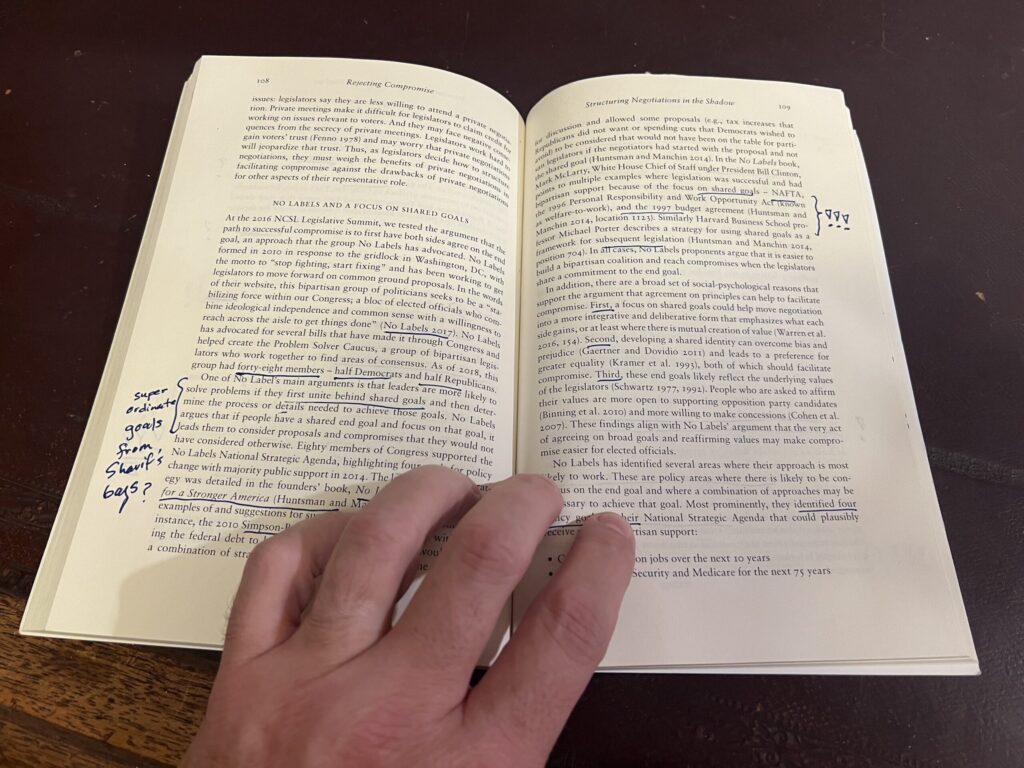
The audio format is engaging as it feels like having a conversation with the author. With paper books, though, I do like taking notes and writing comments in the margins. One cannot do that with audio books.
So, I have to get both the audio and paper versions. I listen to the audiobook, and then I will review it with the paper edition to make notes and comments. I am sure that libraries cringe at my abuse of books. I must apologize. It is how I read, however. Forgive me.
I am a reluctant reader. I loathe the effort, but I do love the results.
